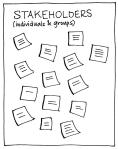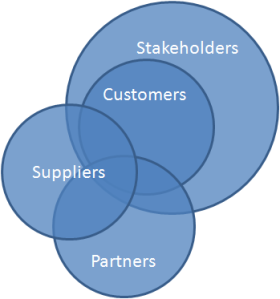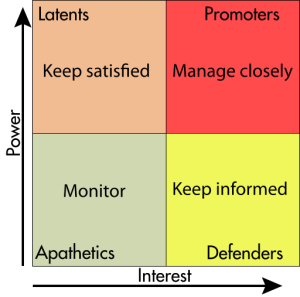Change is our way of life these days and the speed of change is compressing the time changes need to occur and increasing our change saturation in organizations.
In basic terms, changes need to happen faster because we are in a state of constant change.
I think, for the more established organizations, this is even truer. The reason is that they have been so entrenched in the way they do things today that they are finding themselves with many legacy things that need to change as well as the things that need to change to keep them competitive.
How do you speed up change?
I will call this the 51% rule–we are using it in a change effort right now.
This change effort is happening much faster than other changes typically take in my organization. Especially one of this magnitude. Now, the initial phase of this change is being done through a pilot, so it’s not like everything is changing at once; we plan to make the proposed changes and then adjust for future roll out in 2015 and 2016.
That being said, the changes for the pilot are still moving very fast.
There are many that are involved that like things to not change…we all have them. They would slow this change down to a crawl by constantly discussing and not deciding. Last week I actually talked about these type of people and had a lot of great feedback.
However, we have a rule in this change–it’s called the 51% rule. The leaders of this change, and we have several, hold the 51% decision-making authority. What this means is that when it comes to make a decision, based on our schedule, they will make it based on all the input from the teams putting the change aspects together.
So, if people want to discuss something to death, simply stick to the milestone schedule and then provide all the discussion to the leader with the 51% for a final decision. Then, move on to the next milestone.
This, however frustrating the disrupters, is proving to help tremendously to move the change along at the pace expected.
What this is causing is that the teams as a whole don’t get to fully decide on something because a few selfish individuals hold everyone back on points that are important to them. However, if the organization is going to be decisive in business, then they need to be able to stick to a schedule and make changes based on that schedule. If the disrupters can’t figure it out, what I’m finding is that the others who want to help lead the change will work around them.
So, when you start your next change effort, or if you are in one now, consider discussing the 51% rule with your change sponsors and leaders. Get them to agree to the concept and the milestone schedule. When the milestone is up, bring your proposals to the decision authority and have them make a decision. Then you don’t discuss that item again…move on to the next milestone. If the disrupters continue to stick to the past decision and can’t move on, that is fine, work around them with those that will and get a decision at the next milestone. The holdouts will get frustrated, but the only other way is to acquiesce to their actions and stall the change.
These people will eventually see that the team is passing them by with discussion and decisions and they will eventually join where the effort is or they will simply leave. If they choose the latter, find someone else and continue to move forward–that person has decided not to be part of the change that will improve your company and perhaps they have no role in the company anymore?
I know this is tough talk, but reinforcing the negative behaviors of people who try to disrupt and derail change efforts to suit their personal needs and agendas is not focusing on your company’s mission, vision, or customers. They are only focused on themselves. This forces a Service Before Self core value and sends them a message that they are either working to move the company forward or they belong with the competition.
Give this a shot. Of course it depends on steadfast change leadership, but it is a good rule of thumb for change that a leader can set in the beginning and employ with every activity.

 The first step in change management is to define the “burning platform.” If you’re waiting for the platform to catch fire, you’re too late.
The first step in change management is to define the “burning platform.” If you’re waiting for the platform to catch fire, you’re too late.




